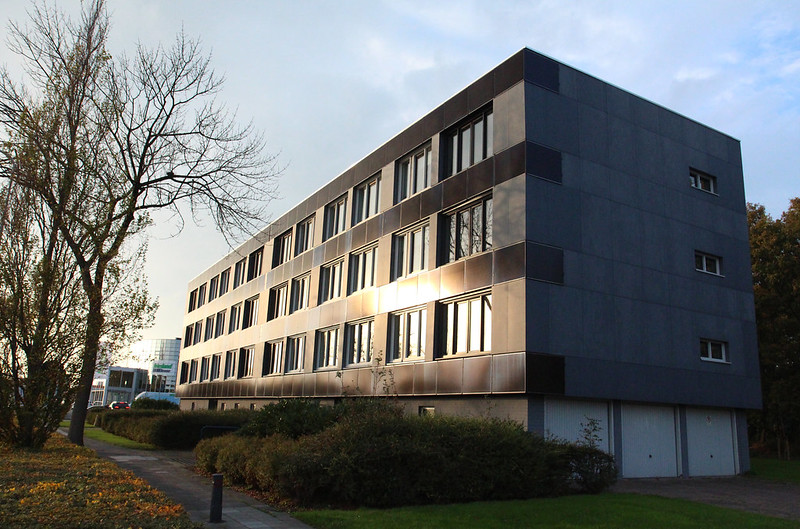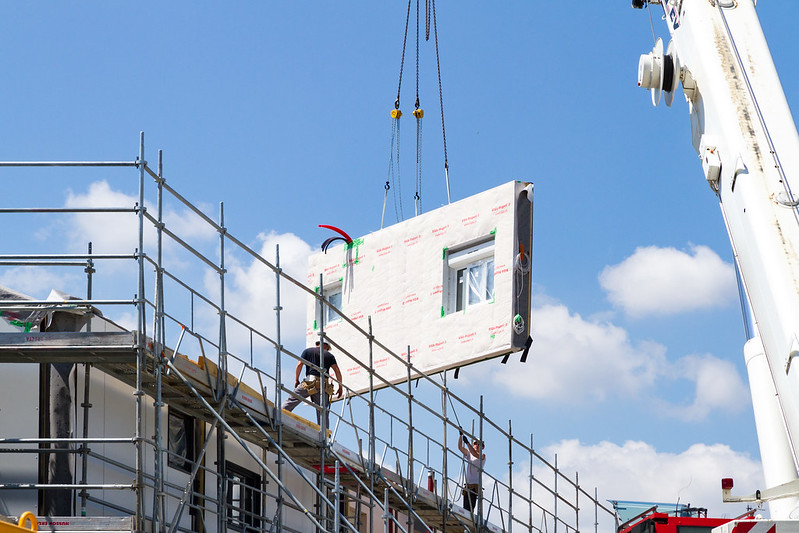This Dutch construction innovation shows it’s possible to quickly retrofit every building
Energiesprong (‘energy jump’) is finding ways to make buildings more efficient without requiring major construction projects.
Every building on the planet will have to get to net-zero emissions by the middle of the century to meet global climate goals—and since most of the buildings that will exist then have already been built, that means a massive number of home retrofits will have to happen to shrink energy use and replace old equipment like gas furnaces.
“In the U.S., that’s around 3 to 6 million buildings per year that need to be fully decarbonized,” says Martha Campbell, a principal in the Carbon-Free Buildings program at the energy nonprofit RMI. In Europe, by another calculation, roughly 15,000 houses need to transform every day for the next 30 years.

That’s not happening now. But in the Netherlands, one program is demonstrating how the process could speed up. Energiesprong (which translates to “energy jump”), a nonprofit that the Dutch government helped launch a decade ago, is coordinating a system of mass retrofits. “We thought, okay, let’s make home retrofits into a scalable solution,” says Christian Richter, who works in the organization’s market development team in Germany.
In one Dutch factory, a company that’s part of the program called RC Panels makes lightweight insulated panels that can be popped on the front of existing row houses. The company uses a laser scanning tool to take measurements at the old house; then, at the factory, a machine cuts out windows and doors to match the old facade exactly. When a truck delivers the panels, they’re attached directly to the old wall. The company also makes insulated panels, with solar panels attached, that can be put over an existing roof. Other Energiesprong vendors supply heat pumps for heating, cooling, and hot water. The retrofits are faster than traditional retrofits, in some cases happening in as little as a day, leading to more energy savings.

“Everything should be in a kind of plug-and-play installable, so that you save labor and labor costs,” Richter says. “In Europe, you don’t have enough labor. So you don’t have enough construction capacity to do it in the old-fashioned way. . . . We do have a big industrial sector, and there’s the capacity that they could produce panels instead of car parts, for example, as this whole sector changes in the future.”
The goal is to make each home “net-zero energy,” meaning that the solar panels on the roof generate enough electricity over the course of the year to equal the power that the house uses for heating, hot water, and appliances. In the Dutch city of Utrecht, for example, houses and apartments that were retrofitted in 2019 have seen their energy use drop by around 78%. The remaining energy use is covered by the solar panels. (The net-zero calculation looks only at what it takes to operate the buildings, and doesn’t account for the emissions that go into making the materials; the organization hasn’t done that full-lifecycle analysis yet.)
In the Netherlands, many of the first renovations have happened in buildings owned by housing associations, in part because they tend to use a standard design, and that makes it easier to mass-produce the parts needed for a retrofit. Energiesprong helped set up a system that lets tenants pay an “energy service” bill that partly covers the cost of the renovations; the huge savings in energy that comes with the retrofits also helps cover the cost. So far, more than 5,700 homes have been retrofitted in the country through the program, and the concept is beginning to be adopted elsewhere, including the U.K., France, Germany, and the United States.
If a system underperforms, the construction company returns, Richter says. “They guarantee net zero, and they have it in their books for five years,” he says. “We’re doing this monitoring and evolution process over five years, and then we take the average and say, okay was it met here or was it not? And if it is not net zero, then they have to figure out why and if there’s something that they should replace.”
In the U.S., RMI is working with partners to test the basic concept in a handful of pilot projects, including an apartment complex used for low-income farmworker housing in California. “How we transform the residential market in the U.S. has been a hard nut to crack,” the nonprofit’s Campbell says. “We have a really low rate of adoption for even just traditional retrofits, where you’re getting maybe between 15% and 25% energy reduction.” When the RMI team learned about Energiesprong, she says, “everyone just said, we have to stop trying to incrementally get better, we have to kind of look at how these guys are doing things.”
Some of the ideas are harder to replicate; there’s more uniformity in Dutch housing, making it easier to manufacture the panels and roofs. RMI and others are working with the Department of Energy on a report that lists all the major building types for different regions of the U.S., and will be providing retrofit guidelines for each type later this year. The DOE and other partners are also working to encourage more research and development of solutions like the insulated panels, which aren’t yet possible to get at an affordable cost in the U.S. (In some regions, including California, they may also not be necessary because of the mild climate.) Additionally, RMI and others are developing new funding models, another critical part of helping the number of retrofits grow.
“We know that roughly 70% of the buildings that exist today will exist in 2050,” Campbell says. “And if we’re going to hit net zero by 2050 . . . our estimates are that we need to hit a retrofit rate between 4% and 6%.” That adds up to as many as 6 million retrofits each year in the U.S. alone.